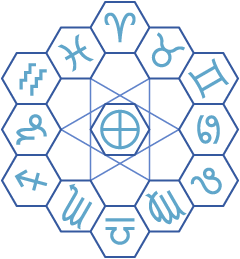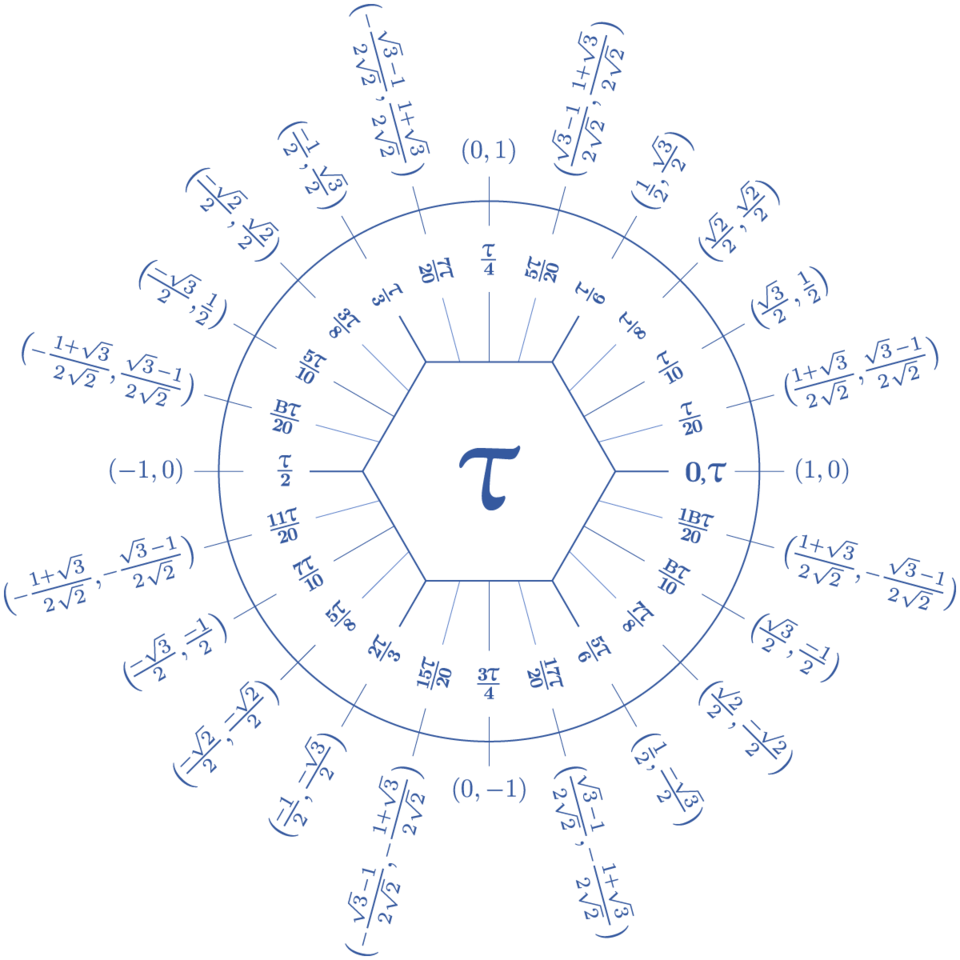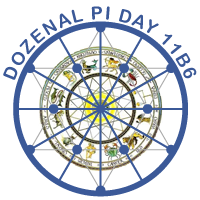Dozenal Pi Day 11B7
"Ten is doubtless a convenient number of fingers to have, though men have gotten along with less and a few people have been born with more. But as the purely arbitrary unit which determines the form of our numbers, it was a miserable choice." – F. Emerson Andrews
"Do not disturb my circles." – Archimedes
 It's that time of year again—time to start thinking about DOZENAL PI DAY.
It's that time of year again—time to start thinking about DOZENAL PI DAY.
Overview
Regardless of its radical prejudices, Pi Day has become, in recent years, an annual cultural event of some magnitude, and the occasion for a certain nominal enthusiasm about "math" that people seem to find meaningful. At the very least, it seems to remind us of our own cleverness, which is something I have nothing against in principle.
Yet I am more convinced than ever that, unless we remain firmly mindful of what separates the arbitrary and symbolic in mathematics from the truly meaningful, Pi Day will ultimately remain a rather vacuous and misguided holiday. Thus, I once again propose the observation of DOZENAL PI DAY on 18; March (decimal 20th), to raise awareness of the superior dozenal radix, while also bringing attention to the underlying meaninglessness of our present decimal notation.
 I feel something must be said about this astrological "sign shift" business that has set the 'tubes abuzz in recent days. There being twelve astrological signs ("Ophiuchus" notwithstanding) arranged around a central point, the issue is clearly one of both dozenal and hexagonal import. Despite the fact that I'm not all that into astrology (though I've learned enough over the years to inform my general fluency in Western occult symbolism), I feel the hexagonal principles at stake must be defended.
I feel something must be said about this astrological "sign shift" business that has set the 'tubes abuzz in recent days. There being twelve astrological signs ("Ophiuchus" notwithstanding) arranged around a central point, the issue is clearly one of both dozenal and hexagonal import. Despite the fact that I'm not all that into astrology (though I've learned enough over the years to inform my general fluency in Western occult symbolism), I feel the hexagonal principles at stake must be defended.

 I am not sure when exactly this "Pi Day" thing became so fashionable, but for me it has come to symbolize everything that is wrong and unwholesome about modern society's relationship with numbers. You see, of late I find myself more and more perturbed by the extent to which people seem to take the primacy of decimal notation for granted in conceptualizing and comparing numbers. In the case of pi, there is NOTHING particularly universal or ontologically significant in the sequence of digits 3.14159265... except that they represent a certain way of parsing the value of pi by successive fractions of ten. THIS IS MAY BE INTERESTING IF YOU ARE REALLY INTO THE NUMBER TEN FOR SOME REASON. Otherwise it—like the entire decimal radix system—is fairly useless.
I am not sure when exactly this "Pi Day" thing became so fashionable, but for me it has come to symbolize everything that is wrong and unwholesome about modern society's relationship with numbers. You see, of late I find myself more and more perturbed by the extent to which people seem to take the primacy of decimal notation for granted in conceptualizing and comparing numbers. In the case of pi, there is NOTHING particularly universal or ontologically significant in the sequence of digits 3.14159265... except that they represent a certain way of parsing the value of pi by successive fractions of ten. THIS IS MAY BE INTERESTING IF YOU ARE REALLY INTO THE NUMBER TEN FOR SOME REASON. Otherwise it—like the entire decimal radix system—is fairly useless.